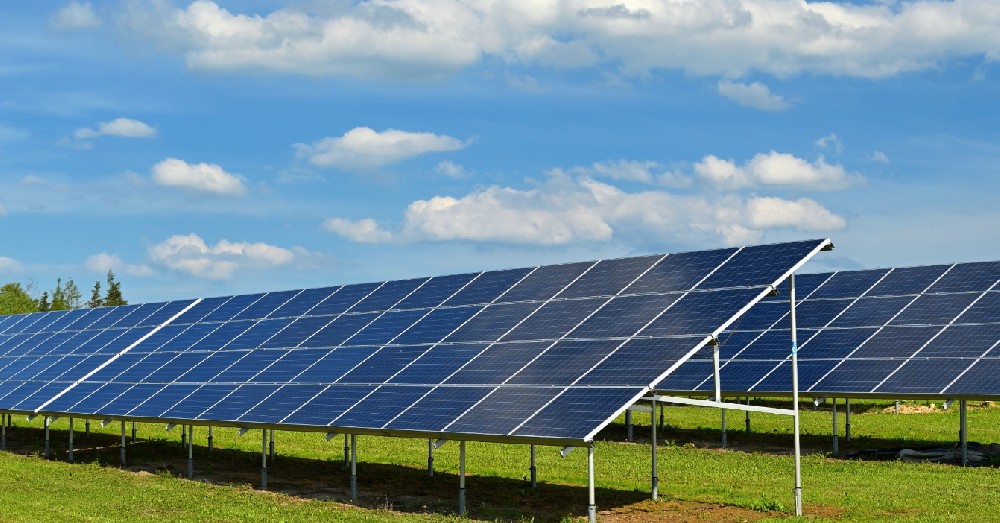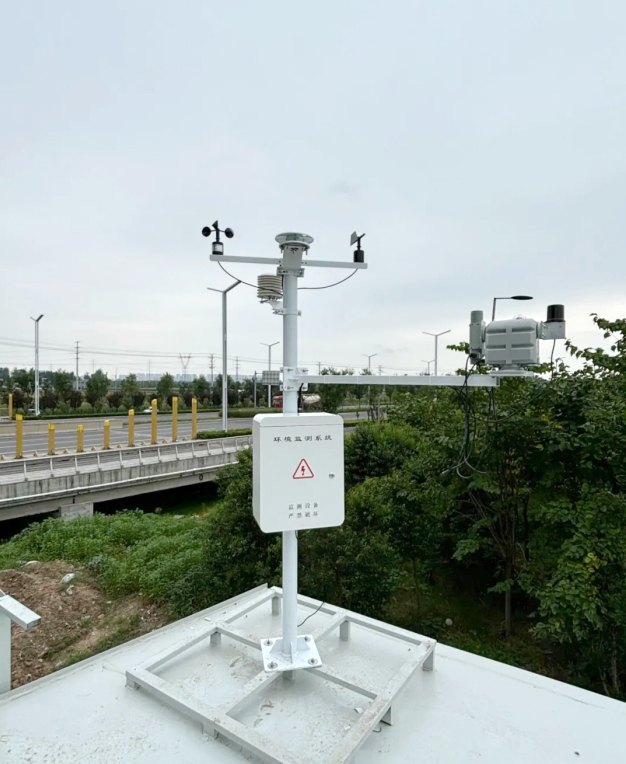

— Blogs —
—Products—
 Consumer hotline +8618073152920
Consumer hotline +8618073152920 WhatsApp:+8615367865107
Address:Room 102, District D, Houhu Industrial Park, Yuelu District, Changsha City, Hunan Province, China
Product knowledge
Time:2025-03-28 16:20:23 Popularity:81
A Comprehensive Analysis of Photovoltaic Testing Instruments, Automatic Weather Stations, and Photovoltaic Power Generation Meteorological Stations: Functions and Applications
Photovoltaic testing instruments, automatic weather stations, and photovoltaic power generation meteorological stations are advanced monitoring devices designed specifically for photovoltaic power plants. They provide real-time collection of key meteorological data to support the operation, maintenance, and efficiency optimization of solar power generation. These devices combine high-precision sensors and intelligent technology, not only promoting the sustainable development of the photovoltaic industry but also showing broad application potential in various fields. This article will provide a detailed introduction to their definitions, working principles, monitored parameters, and practical value.

A photovoltaic testing instrument automatic weather station is an integrated environmental monitoring system designed to provide comprehensive, real-time, and automated data collection for the surrounding environment of a photovoltaic power plant. It consists of various sensors, a data acquisition host, a solar-powered system, a high-strength support frame, and an electrical control box, which can be flexibly combined according to user needs. Its core function is to monitor meteorological parameters and support remote management, providing the basis for the refined operation of the power plant.
A photovoltaic power generation meteorological station, on the other hand, is a dedicated monitoring tool for photovoltaic power generation systems, focusing on providing high-precision meteorological data for plant operation and energy forecasting. It is also equipped with various sensors and emphasizes the timeliness and reliability of the data, helping to optimize power generation strategies.
The design objectives of the two are highly aligned, with the main difference in their application focus: the photovoltaic testing instrument automatic weather station emphasizes versatility and flexibility, while the photovoltaic power generation meteorological station is more focused on optimizing power generation efficiency. Together, they form an essential support system for the photovoltaic industry.

These meteorological stations operate based on several key components:
- Components: Solar panels, charge controllers, and batteries.
- Principle: Solar panels convert sunlight into electrical energy, while controllers manage the charging and discharging of the batteries, ensuring the system runs even on cloudy days or at night. This self-powering design eliminates the need for an external power source, making it suitable for remote areas.
- Types: Includes temperature sensors (ambient and component temperature), humidity sensors, wind speed and direction sensors, barometric pressure sensors, and radiation sensors.
- Function: Real-time collection of various meteorological parameters. For example, solar radiation intensity directly impacts power generation, while wind speed and direction affect equipment safety.
- Data Acquisition Device: Integrates sensor signals, processes, and stores them. The data is then uploaded to the cloud platform via wireless networks (e.g., 4G). Users can remotely access the data for real-time monitoring.
- System Function: The system uses built-in algorithms to analyze the data, generate reports, or trigger alarms. For instance, if wind speed exceeds a safe threshold, the system automatically alerts maintenance personnel to take protective measures.
Photovoltaic testing instruments, automatic weather stations, and photovoltaic power generation meteorological stations can collect rich environmental data. Below are the main parameters monitored:
- Ambient Temperature: Reflects the overall climate conditions in the power plant area.
- Component Temperature: High temperatures reduce the efficiency of photovoltaic panels, and real-time monitoring helps adjust operational strategies.
- High humidity can cause water mist on the surface of photovoltaic panels, affecting light absorption. Monitoring humidity helps guide cleaning schedules.
- These affect the cooling effect and equipment stability. In the event of strong winds, data can be used to assess safety risks and take protective actions.
- Types: Total radiation, direct radiation, scattered radiation, inclined radiation, and daily/monthly/yearly cumulative radiation.
- Role: Directly determines the power generation potential, helping to optimize the angle of photovoltaic panels and forecast energy output.
- Provides comprehensive meteorological background data to assist in analyzing the impact of the environment on power generation.
- Precipitation: Assesses the impact of rain on the cleanliness of photovoltaic panels and power generation efficiency.
- Sunlight Hours: Measures the usable time of solar energy resources.
- Visibility: Supports environmental assessment in foggy or polluted areas.
These parameters can be customized based on user needs to ensure the data aligns closely with specific application scenarios.
These meteorological stations perform excellently in practical applications due to advanced technology and design:
- Solar power supply reduces carbon emissions, aligning with environmental protection trends.
- High-precision sensors (with radiation errors less than ±5%) ensure accurate data, even under extreme weather conditions (such as strong winds or heavy rain), allowing stable operation.
- Data is uploaded in real time, allowing users to check it anytime via the cloud platform, improving response speed and operation and maintenance efficiency.
- The system can predict weather risks or efficiency decline, trigger alarms, and recommend optimization measures, such as adjusting the angle of photovoltaic panels.
- Modular design supports parameter expansion, is easy to install, and has low maintenance costs.
- Historical data is stored and trend reports are generated, providing support for long-term planning.

The applications of these meteorological stations are not limited to photovoltaic power plants, and extend to multiple industries:
- Efficiency Improvement: Monitoring radiation and temperature helps optimize the layout of photovoltaic arrays. For example, adjusting panel angles in cloudy weather can increase power generation by 10%.
- Fault Prevention: Early warnings of extreme weather reduce equipment damage and downtime.
- Cost Savings: Reduces the need for on-site inspections and lowers labor costs.

- Provides radiation, humidity, and precipitation data to guide irrigation and planting. For instance, optimizing water resource distribution in arid areas can improve crop yield.
- Supports weather forecasting and climate analysis, providing evidence for environmental policies.
- In rooftop systems or solar carports, evaluates light conditions to optimize design and operational efficiency.
In the global energy transition, these meteorological stations are a key pillar of the photovoltaic industry:
- Improving Power Generation Efficiency: Precise data improves energy utilization rates, increasing economic returns.
- Promoting Low-carbon Development: Optimizes solar energy utilization and reduces reliance on fossil fuels.
- Technological Innovation: Combines with smart grids and energy storage systems to build an efficient energy network.

Photovoltaic testing instruments, automatic weather stations, and photovoltaic power generation meteorological stations provide strong support for photovoltaic power plants and other fields with their high precision, intelligence, and green characteristics. From enhancing power generation efficiency to ensuring safe operation and promoting scientific research, they demonstrate multi-dimensional value. In the global wave of clean energy development, these devices not only embody technological progress but also play a crucial role in advancing a sustainable future. As innovation deepens, they will continue to contribute to energy optimization and environmental protection.
NBL-W-SRS-Solar-radiation-sensor-instruction-manual-V4.0.pdf
NBL-W-HPRS-Solar-Radiation-Sensor-Instruction-Manual-V3.0.pdf
Prev:Photovoltaic Weather Stations: Intelligent Solutions for Green Energy and Multi-domain Applications
Related recommendations
Sensors & Weather Stations Catalog
Agriculture Sensors and Weather Stations Catalog-NiuBoL.pdf
Weather Stations Catalog-NiuBoL.pdf
Related products
 Combined air temperature and relative humidity sensor
Combined air temperature and relative humidity sensor Soil Moisture Temperature sensor for irrigation
Soil Moisture Temperature sensor for irrigation Soil pH sensor RS485 soil Testing instrument soil ph meter for agriculture
Soil pH sensor RS485 soil Testing instrument soil ph meter for agriculture Wind Speed sensor Output Modbus/RS485/Analog/0-5V/4-20mA
Wind Speed sensor Output Modbus/RS485/Analog/0-5V/4-20mA Tipping bucket rain gauge for weather monitoring auto rainfall sensor RS485/Outdoor/stainless steel
Tipping bucket rain gauge for weather monitoring auto rainfall sensor RS485/Outdoor/stainless steel Pyranometer Solar Radiation Sensor 4-20mA/RS485
Pyranometer Solar Radiation Sensor 4-20mA/RS485
Screenshot, WhatsApp to identify the QR code
WhatsApp number:+8615367865107
(Click on WhatsApp to copy and add friends)